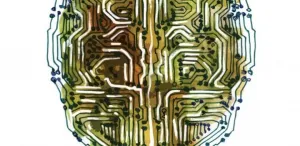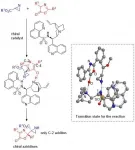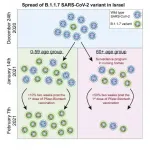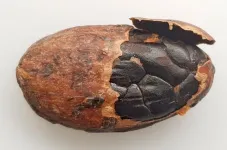Brain-on-a-chip would need little training
2021-04-20
(Press-News.org) A biomimicking "spiking" neural network on a microchip has enabled KAUST researchers to lay the foundation for developing more efficient hardware-based artificial intelligence computing systems.
Artificial intelligence technology is developing rapidly, with an explosion of new applications across advanced automation, data mining and interpretation, healthcare and marketing, to name a few. Such systems are based on a mathematical artificial neural network (ANN) composed of layers of decision-making nodes. Labeled data is first fed into the system to "train" the model to respond a certain way, then the decision-making rules are locked in and the model is put into service on standard computing hardware.
While this method works, it is a clunky approximation of the far more complex, powerful and efficient neural network that actually makes up our brains.
"An ANN is an abstract mathematic model that bears little resemblance to real nervous systems and requires intensive computing power," says Wenzhe Guo, a Ph.D. student in the research team. "A spiking neural network, on the other hand, is constructed and works in the same way as the biological nervous system and can process information in a faster and more energy-efficient way."
Spiking neural networks (SNNs) emulate the structure of the nervous system as a network of synapses that transmit information via ion channels in the form of action potential, or spikes, as they occur. This event-driven behavior, implemented mathematically as a "leaky integrate-and-fire model," makes SNNs very energy efficient. Plus, the structure of interconnected nodes provides a high degree of parallelization, which further boosts processing power and efficiency. It also lends itself to implementation directly in computing hardware as a neuromorphic chip.
"We used a standard low-cost FPGA microchip and implemented a spike-timing-dependent plasticity model, which is a biological learning rule discovered in our brain," says Guo.
Importantly, this biological model does not need teaching signals or labels, allowing the neuromorphic computing system to learn real-world data patterns without training.
"Since SNN models are very complex, our main challenge was to tailor the neural network settings for optimal performance," says Guo. "We then designed the optimal hardware architecture considering a balance of cost, speed and energy consumption."
The team's brain-on-a-chip proved to be more than 20 times faster and 200 times more energy efficient than other neural network platforms.
"Our ultimate goal is to build a compact, fast and low-energy brain-like hardware computing system. The next step is to improve the design and optimize product packaging, miniaturize the chip and customize it for various industrial applications through collaboration," Guo says.
INFORMATION:
[Attachments] See images for this press release:

ELSE PRESS RELEASES FROM THIS DATE:
2021-04-20
LA JOLLA, CALIF. - April 20, 2021 Scientists at Sanford Burnham Prebys have identified, at an atomic level, how a part of a protein called PLEKHA7 interacts with a cell's membrane to regulate important intercellular communications. The research, published in the journal Structure, points to hotspots within PLEKHA7 as targets for drugs. These targets could be key in designing treatments for advanced colon, breast and ovarian cancers.
The region, or domain, in PLEKHA7 that the researchers examined, pleckstrin homology (PH), is commonly found in proteins ...
2021-04-20
A long-awaited, high-tech analysis of the upper body of famed fossil "Little Foot" opens a window to a pivotal period when human ancestors diverged from apes, new USC research shows.
Little Foot's shoulder assembly proved key to interpreting an early branch of the human evolutionary tree. Scientists at the END ...
2021-04-20
Recent growth in the number of healthcare workers providing home care for Medicare patients is "small and inadequate" compared with the increasing demand in an aging America, a new study suggests.
To have hope of keeping up, Medicare likely will need to reconsider how it compensates providers for home care, the researchers say.
"Only 0.7 percent of physicians in Medicare provided home care regularly," said Nengliang "Aaron" Yao, PhD, a researcher with the University of Virginia School of Medicine's Section of Geriatric Medicine. "Targeted policies are needed to support home-based medical care."
Trends in Home Care
Growth in the field of home care was "modest but steady" between 2012 and 2016, with most of the growth coming from increasing numbers of nurse practitioners providing home ...
2021-04-20
A novel system of chilled panels that can replace air conditioning can also help reduce the risk of indoor disease transmission, suggests new analysis from the University of British Columbia, University of Pennsylvania and Princeton University.
The researchers computed air conditioning requirements in 60 of the world's most populous cities--with the additional ventilation required due to COVID-19. Then, they compared the energy costs with their cooling method, using the chilled panels and natural ventilation.
The results, published in the COVID-19 edition of Applied Energy, showed that the alternative solution can save up to 45 per cent of the required energy, while ensuring building occupants are comfortable ...
2021-04-20
Nearly three-quarters of Earth's land had been transformed by humans by 10,000BC, but new research shows it largely wasn't at the expense of the natural world.
A study involving University of Queensland researchers combined global maps of population and land use over the past 12,000 years with current biodiversity data, demonstrating the effective environmental stewardship of Indigenous and traditional peoples.
UQ's Professor James Watson said the findings challenged the modern assumption that human 'development' inevitably led to environmental destruction.
"There's a paradigm among natural scientists, conservationists and policymakers that ...
2021-04-20
Unless you've studied chemistry in college, it's unlikely you've come across the name aziridine. An organic compound with the molecular formula, C2H4NH, aziridines are well-known among medicinal chemists, who make use of the compound to prepare pharmaceutical drugs such as Mitomycin C, a chemotherapeutic agent known for its anti-tumor activity. Specifically, aziridines are what chemists call "enantiomers"--molecules that are mirror images of each other and cannot be superposed on one another. A peculiarity with enantiomers is that the biological activity ...
2021-04-20
A team headed by Dr. Phillip M. Maffettone (currently at National Synchrotron Light Source II in Upton, USA) and Professor Andrew Cooper from the Department of Chemistry and Materials Innovation Factory at the University of Liverpool joined forces with the Bochum-based group headed by Lars Banko and Professor Alfred Ludwig from the Chair of Materials Discovery and Interfaces and Yury Lysogorskiy from the Interdisciplinary Centre for Advanced Materials Simulation. The international team published their report in the journal Nature Computational Science from 19 April 2021.
Previously manual, time-consuming, error-prone
Efficient analysis of X-ray diffraction data (XRD) plays a crucial role in the discovery of new materials, for example for the energy ...
2021-04-20
A new study at Tel Aviv University found that the British variant (termed: B.1.1.7) of Covid-19 is 45% more contagious than the original virus. The researchers relied on data from about 300,000 PCR tests for Covid-19 obtained from the COVID-19 testing lab, which was established in collaboration with the Electra Group.
The new study was conducted by Prof. Ariel Munitz and Prof. Moti Gerlitz of the Department of Clinical Microbiology and Immunology at the Sackler Faculty of Medicine, together with Dr. Dan Yamin and PhD student Matan Yechezkel from the Laboratory for Epidemic Modeling and Analysis (LEMA) at the Department of Industrial Engineering, all at Tel Aviv University. The study's results were published in the prominent scientific ...
2021-04-20
Musty, moldy, smoky or horse dung-like smelling cocoa is not suitable for chocolate production. As part of a larger research project, a team of scientists led by Martin Steinhaus from the Leibniz Institute for Food Systems Biology at the Technical University of Munich has identified the odorants responsible for such off-flavors. The food industry can now use these results to objectively assess the sensory quality of fermented cocoa based on odorant concentrations. The research team published the data in the Journal of Agricultural and Food Chemistry.
Who likes chocolate ...
2021-04-20
An international group of scientific experts co-directed by CNRS oceanographer Jean-Pierre Gattuso* has stated the requirements for coral reef survival in an article published in Biological Conservation. Over 500 million people rely on coral reefs for the protection they confer against submersion, the fishing resources they offer, and the tourism they help attract. Yet these ecosystems are among the most threatened by global warming: since the 1980s, there has been a rise in the number of bleaching episodes, during which corals expel the microscopic algae that keep them alive. While these events are reversible if the temperature change is only ...
LAST 30 PRESS RELEASES:
[Press-News.org] Brain-on-a-chip would need little training







